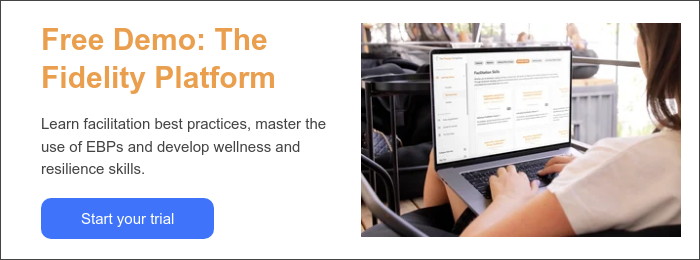April 2023 News Roundup

Every month, we’re bringing you the top news in addiction treatment and justice services from publications around the country. In addition, we’ll share what we’re reading as our team creates and updates evidence-based curricula and training for our partners around the world.
Addiction Treatment | Justice Services | What We're Reading
Addiction Treatment
Headline
The Opioid Solutions Leadership Network creates platform for knowledge sharing
What
The National Association of Counties (NACo) has brought together 30 county leaders seeking innovative and evidence-based solutions with opioid settlement funds with two goals: help counties effectively invest settlement funds and create a platform for knowledge sharing that will be disseminated nationwide.
Why this matters
A combination of federal and local efforts are needed to effectively combat the opioid crisis. This county network, supported by Vital Strategies and other charitable organizations, is an important step in centralizing data at the local level on opioid abatement while serving as a proving ground for what works when allocating funds.
Headline
Congress moves to make xylazine a controlled substance
What
The US Drug Enforcement Administration (DEA) has classified xylazine, a sedative commonly used in veterinary medicine, as a Schedule IV controlled substance. The move comes amid concerns over its misuse as a recreational drug, particularly in combination with opioids as a likely culprit in the growing number of drug-related deaths in the U.S. The new classification will restrict its use and distribution, with tighter controls on prescribing, dispensing and record-keeping.
Why this matters
Controlling drugs on the periphery of the opioid crisis is a key step to addressing the various modalities in which substance use disorders occur. All hope this legislation will provide effective, new means of counteracting this deadly trend on a national level.
Headline
Narcan approval could be a game changer — if people can afford it
What
The FDA's approval of a naloxone nasal spray (Narcan) could help address the opioid epidemic. Naloxone is a medication that can reverse an opioid overdose thanks to ease of administering. Still, the high cost of Narcan could limit its accessibility for those who need it most; a two-pack can cost up to $50 without insurance. Advocates are calling for increased funding for naloxone distribution programs and efforts to make it more affordable.
Why this matters
Narcan is renowned for its ability to save the lives of individuals who have experienced an opioid overdose. Making the drug more accessible can go a long way in effectively addressing the opioid epidemic.
Justice Services
Headline
Justice Department announces Civil Legal Services Pilot Program
What
The US Department of Justice’s new pilot program in select Bureau of Prisons (BOP) women’s facilities aims to expand civil legal services to legally underrepresented Americans. The program will provide grants to organizations that offer legal aid in areas such as debt collection, benefits access and child custody.
Why this matters
Legal representation plays an important role in equity. This initiative could help ease the burden of reentry for underrepresented justice-involved Americans. If successful, it could expand to provide legal support for additional justice-involved populations.
Headline
OJJDP-supported reentry programs give justice-involved youth a second chance
What
The Office of Juvenile Justice and Delinquency Prevention (OJJDP)’s Second Chance Act programs seek to assist youth in reentry. Program services include educational and vocational opportunities, employment and housing assistance, mental and physical healthcare and treatment for substance use.
Sources of success
A key factor that has led to the programs’ success is an emphasis on family. Cathy Smith-Curry, director of the department’s Office of Reentry Services, states that early family involvement, “family chats” on topics like financial literacy and courses on fortifying family communication are at the heart of why the programs work.
Headline
NIJ releases “Five things about reentry”
What
A decade of research into reentry has revealed five key takeaways:
-
- Tailored approaches to the unique needs and risk factors of an individual should be prioritized as much as possible
- Addressing one issue at the cost of another is not enough; support services should be holistic in nature.
- Cognitive behavioral therapy effectively improves outcomes.
- Community supervision coupled with robust support functions leads to better outcomes.
- The factors that contribute to recidivism are multifaceted; we need a more nuanced approach to measure it.
Why this matters
In 2021, approximately 443,740 individuals were released for reentry. With so many returning to families and communities, it’s important to apply findings and data that can help them be successful in their personal lives and less likely to recidivate.
What We’re Reading: Love 2.0
In Love 2.0, psychologist Barbara Fredrickson provides a new definition of love — the “supreme emotion” — based on the ways we experience it in our bodies and minds. Fredrickson explores love as a moment-to-moment experience of shared positivity and caring that can be created with any person. The book also introduces practices for increasing well-being, generating compassion, managing stress and experiencing more love in daily life.

